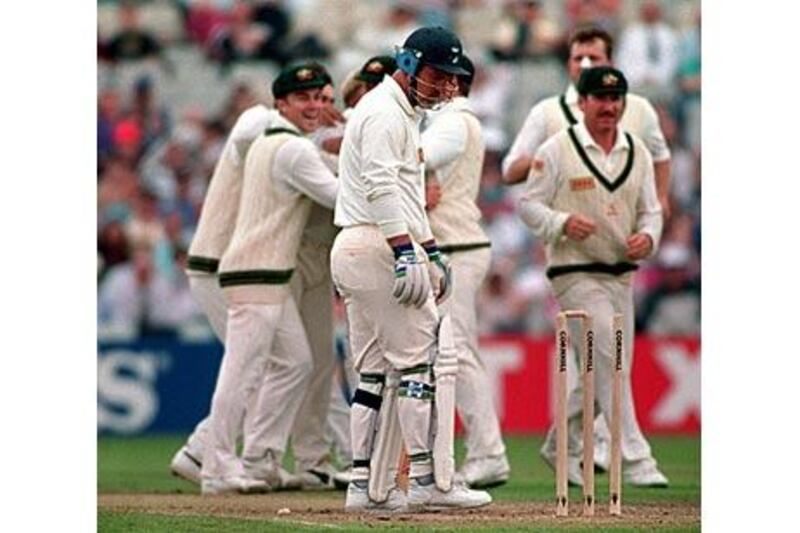"He's done it." Cue trademark Richie Benaud pause. "He's started off with the most beautiful delivery. Gatting has absolutely no idea what has happened to it. He still doesn't know. He asked [umpire] Kenny Palmer on the way out. Kenny Palmer just gave him a raised eyebrow and a little nod." The commentary which accompanied Shane Warne's "Ball of the Century" to Mike Gatting, on June 4 1993, is not exactly in the Kenneth Wolstenholme, "they think its all over ... it is now" league, but that was Benaud's way.
Happily, Benaud was famous for things other than the odd well-chosen word softly spoken into a microphone. One of them was being a master proponent of leg-spin, which meant it was apt he was in the commentary box to usher in the arrival of a player whom he later claimed "changed the face of cricket". "That Ball" has been replayed often. It is an indelible image on the minds of English and Australia supporters, indeed most cricket fans, and that one delivery itself even has its own page on Wikipedia.
Yet, so minimalistic was BBC's coverage, it has never suffered paralysis by over-analysis. There was no Four-Sight. No high definition, spin-vision. If a delivery did not have its path tracked by Hawk-Eye, did it still really happen? Dr Paul Hawkins's remarkable feat of applied science did overlap with the second half of Warne's career. However, while the advance of technology has assisted batsmen the world over with demystifying mystery spinners, Australia's finest remained a man apart.
In one match of the 2005 Ashes series, Warne bowled a delivery to the English opener Marcus Trescothick which spun so far, Hawk-Eye's virtual tracking system was apparently unable to plot its path. It had turned beyond the bounds of logic. In most of the grainy reproductions of the Gatting delivery posted on YouTube, the flight-path of the ball itself is barely visible. Perhaps that helps the viewer to sympathise with how Gatting was feeling at the time.
"I suppose I can say that 'I was there' at the moment he first indicated his potential to the wider world," the bearded batsman would later comment. "There or thereabouts, anyway." Warne's own take on it was reserved. "I knew Mike Gatting was a good player of spin and you are always a bit nervous bowling your first ball," he said. "What we'll have to do here is bowl a nice leg-break which hopefully lands somewhere on the mark and can turn."
Given the acres of Amazonia which have been felled in the name of Warne-mania since, it seems amazing to think he was virtually unknown before the 1993 Ashes. The announcement by Martin Crowe, the New Zealand captain, before Australia's touring party left for England, that Warne was the best leg-spinner in the world, went largely unnoticed. It was barely a great claim to fame, given that the act was supposed to be in terminal decline, and there were few bowlers of that style in the Test game anyway.
His early international career had met with some success, most notably via a delivery to the West Indies captain, Richie Richardson, which Warne would later say changed his career. The Gatting ball, however, changed his life. Suddenly, the fast-food loving, chain-smoking beach bum from St Kilda was bathed in a limelight in which he would bask in for the next 16 years. "Hollywood", as he became known, remains the main attraction in his now once annual return to the wicket, in the Indian Premier League.
It also propelled him to a run of Ashes success that summer which culminated in 34 wickets, and an economy rate of less that two runs per over during the course of the series, unheard of for a leg-spinner. He ended the summer with the ultimate acclaim in the game of being named one of Wisden's five cricketers of the year. pradley@thenational.ae






